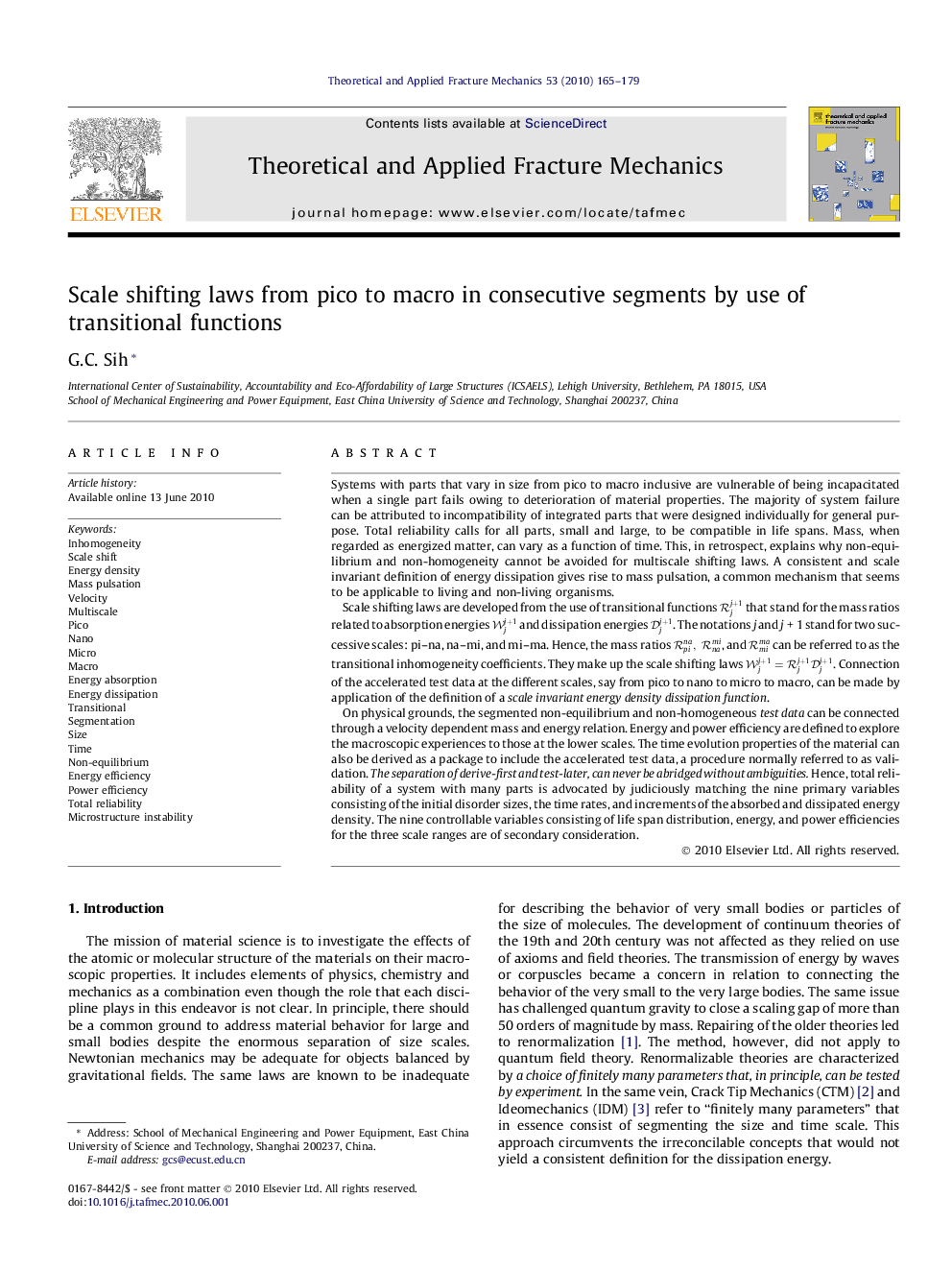| کد مقاله | کد نشریه | سال انتشار | مقاله انگلیسی | نسخه تمام متن |
|---|---|---|---|---|
| 804921 | 905021 | 2010 | 15 صفحه PDF | دانلود رایگان |

Systems with parts that vary in size from pico to macro inclusive are vulnerable of being incapacitated when a single part fails owing to deterioration of material properties. The majority of system failure can be attributed to incompatibility of integrated parts that were designed individually for general purpose. Total reliability calls for all parts, small and large, to be compatible in life spans. Mass, when regarded as energized matter, can vary as a function of time. This, in retrospect, explains why non-equilibrium and non-homogeneity cannot be avoided for multiscale shifting laws. A consistent and scale invariant definition of energy dissipation gives rise to mass pulsation, a common mechanism that seems to be applicable to living and non-living organisms.Scale shifting laws are developed from the use of transitional functions Rjj+1 that stand for the mass ratios related to absorption energies Wjj+1 and dissipation energies Djj+1. The notations j and j + 1 stand for two successive scales: pi–na, na–mi, and mi–ma. Hence, the mass ratios Rpina,Rnami, and Rmima can be referred to as the transitional inhomogeneity coefficients. They make up the scale shifting laws Wjj+1=Rjj+1Djj+1. Connection of the accelerated test data at the different scales, say from pico to nano to micro to macro, can be made by application of the definition of a scale invariant energy density dissipation function.On physical grounds, the segmented non-equilibrium and non-homogeneous test data can be connected through a velocity dependent mass and energy relation. Energy and power efficiency are defined to explore the macroscopic experiences to those at the lower scales. The time evolution properties of the material can also be derived as a package to include the accelerated test data, a procedure normally referred to as validation. The separation of derive-first and test-later, can never be abridged without ambiguities. Hence, total reliability of a system with many parts is advocated by judiciously matching the nine primary variables consisting of the initial disorder sizes, the time rates, and increments of the absorbed and dissipated energy density. The nine controllable variables consisting of life span distribution, energy, and power efficiencies for the three scale ranges are of secondary consideration.
Journal: Theoretical and Applied Fracture Mechanics - Volume 53, Issue 3, June 2010, Pages 165–179